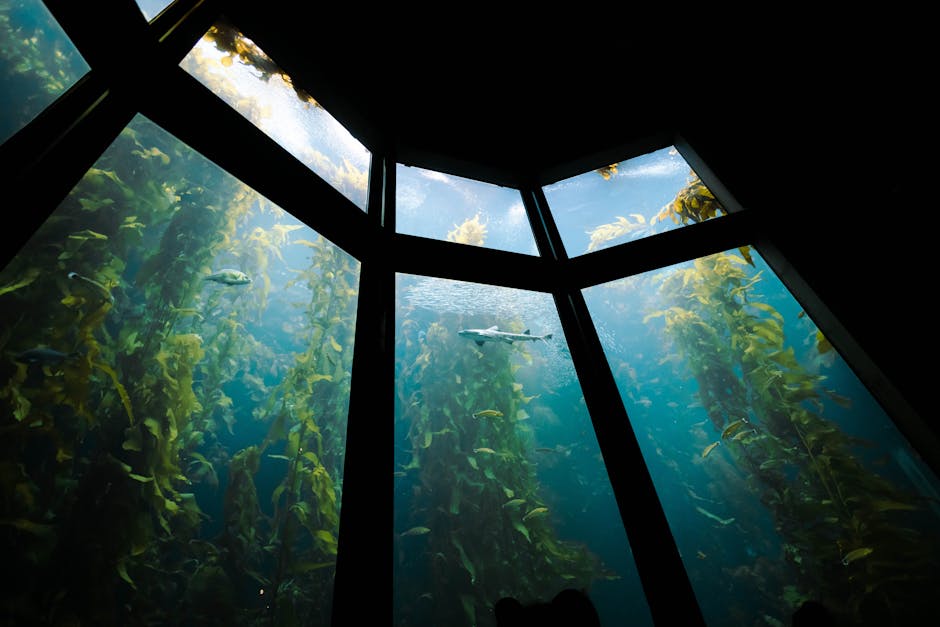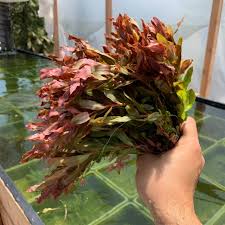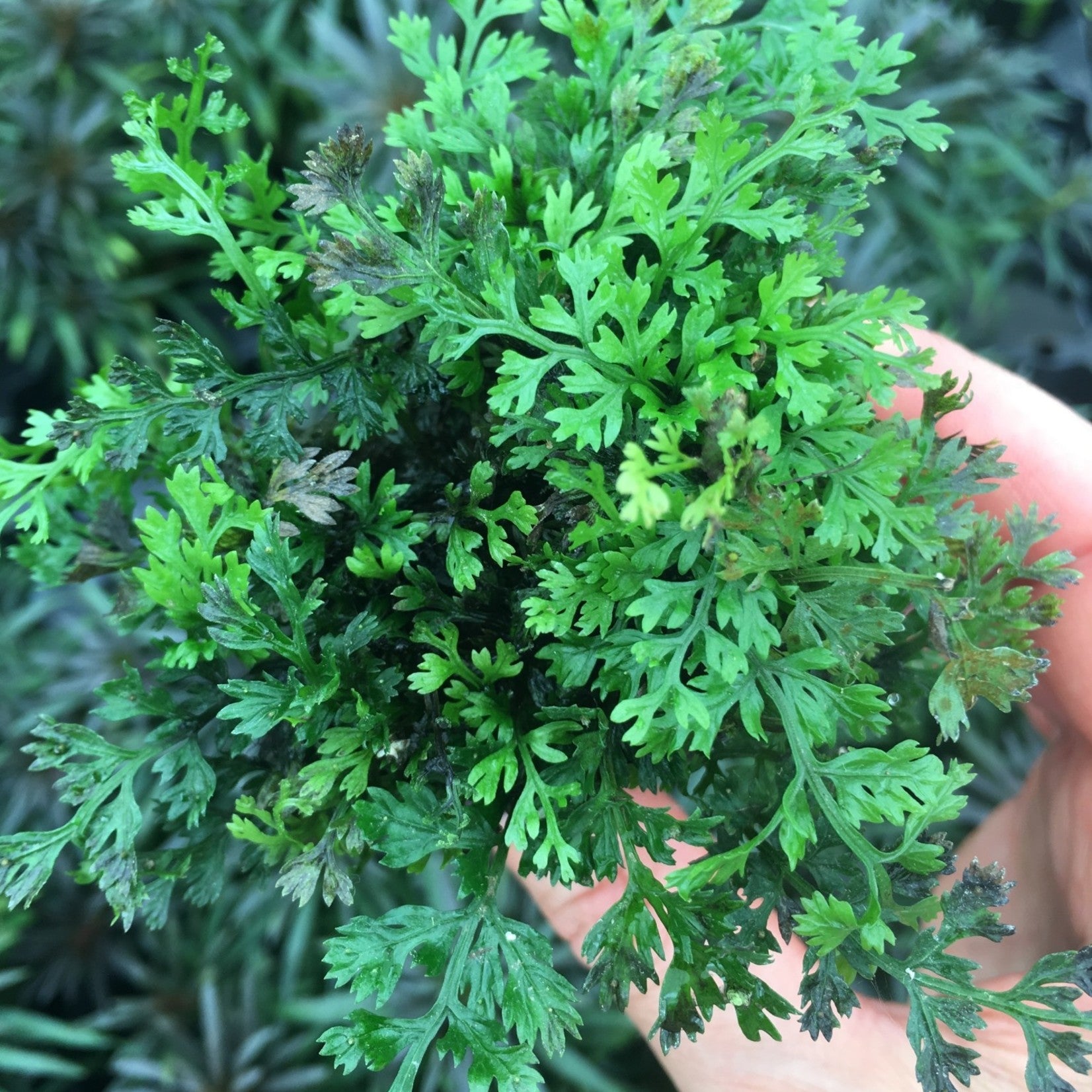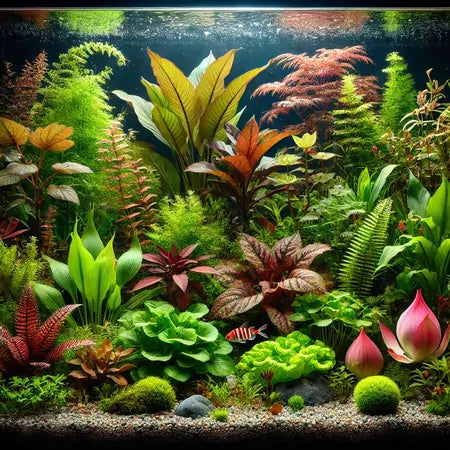Trending searches
Popular products
$0

Dive into the serene world of low light plants; the unsung heroes that thrive in the shaded corners of our aquariums and ponds. Discover how these unassuming plants not only enhance the beauty of your aquatic environments but also play a crucial role in maintaining the ecosystem’s balance. This guide will unveil the secrets to nurturing these verdant treasures, ensuring they flourish beneath the water’s surface.
Low light plants are the cornerstones of aquatic ecosystems, thriving in less illuminated environments where other plants might struggle. Known for their resilience, they serve not only as aesthetic additions but as vital components for maintaining water quality and providing habitats. Grasping the basics of these plants helps aquarists and pond owners create balanced, thriving aquatic environments that mimic natural habitats.
The allure of low light plants lies in their minimal requirements and ability to create lush, serene landscapes underwater. They’re perfect for beginners and seasoned aquarists alike, offering a forgivable learning curve in the art of aquatic gardening. This section aims to unravel the mysteries surrounding these plants, paving the way for successful cultivation.
Selecting the right plants is crucial for establishing a vibrant, low-light aquatic garden. Favorites like Anubias, Java Fern, and Cryptocoryne offer unparalleled beauty with minimal light requirements. These species, known for their hardiness and easy care, are ideal for both novice and experienced hobbyists looking to enhance their aquatic environments.
Another noteworthy contender is the Moss Ball, a unique addition that not only looks intriguing but also acts as a natural filter, absorbing unwanted substances from the water. This section will delve deeper into each of these species, highlighting their specific needs and contributions to the aquatic ecosystem.
Creating a conducive environment for low light plants begins with understanding their natural habitats. This includes installing proper substrate for root establishment, choosing the right size and type of aquarium or pond, and ensuring the water chemistry is balanced. Lighting, while minimal, should mimic natural conditions to support the healthy growth of these plants.
The importance of positioning cannot be overstated; placing your plants where they can receive the correct amount of light and shade is key. Equally critical is the use of high-quality water with the right pH and nutrient levels. This section provides step-by-step guidance on setting up your aquatic space to support the flourishing of low light plants.
While low light plants are less demanding, they still require care to thrive. This involves regular monitoring of water quality, ensuring the substrate is conducive to growth, and judicious use of fertilization. Understanding the water conditions that mimic their natural habitat is crucial, as is ensuring the soil or aquatic substrate provides enough nutrients without encouraging algae growth.
The balance of light, nutrients, and water quality is a delicate dance that every plant enthusiast must learn. Detailed in this section are tips and tricks to maintaining this balance, promoting robust growth and the vigorous health of your aquatic plants.
Growing low light plants can come with its set of challenges, from dealing with algae outbreaks to ensuring the plants receive enough nutrients without being outcompeted by faster-growing species. This section tackles these issues head-on, offering practical solutions and preventative measures to keep your plants thriving.
Understanding the common pitfalls and learning how to navigate them can significantly enhance the success rate of your aquatic gardening endeavors. From algae control to nutrient supplementation, this segment is filled with invaluable insights for both beginners and experienced gardeners.
The final piece of the puzzle is incorporating low light plants into your aquatic landscape in a way that is both visually appealing and beneficial to the ecosystem. This involves strategic placement to create depth and interest, choosing species that complement each other, and understanding the growth patterns of these plants.
This section will explore creative ways to integrate low light plants into your aquarium or pond, providing ideas that will help you achieve a balanced, lush, and thriving aquatic garden. From the foreground to the background, every plant plays a vital role in the aquatic symphony.
Nurturing low light plants in your aquarium or pond isn’t just about adding a touch of greenery; it’s about creating a harmonious ecosystem that supports both plant and aquatic life. With the right care, these plants can transform your water feature into a thriving, self-sustaining world. Remember, the success of your aquatic garden relies not just on the plants you choose but also on your dedication to understanding and meeting their needs. Embrace the journey of caring for low light plants, and watch as your underwater or waterside space becomes a vibrant haven for all its inhabitants.



Check out our shop for a variety of fresh, farm-grown plants! Find the perfect options to enhance your aquarium today.
!